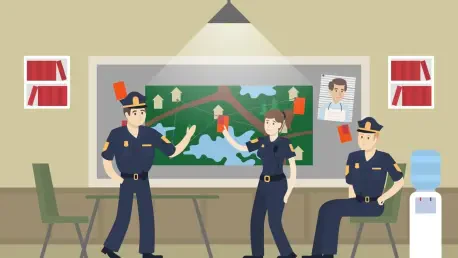The disturbing series of violent attacks on Minnesota state lawmakers has underscored the vulnerabilities public officials face today. Federal murder and stalking charges have been brought against Vance Boelter, a 57-year-old accused of orchestrating these attacks. The events led to the tragic deaths of former Minnesota Democratic House Speaker Melissa Hortman and her husband, Mark, as well as injuries to state Sen. John Hoffman and his wife, Yvette. These incidents have brought public safety concerns for officials to the forefront, indicative of a growing trend of targeted violence.
Vance Boelter: A Methodical Pattern of Violence
Investigations have revealed a chilling, calculated approach behind Boelter’s actions. His visits to the homes of several officials demonstrate a broader and more alarming intent. Authorities found a notebook containing the names of over 45 public officials, pointing to a well-planned scheme to incite fear and harm. In a grim discovery, a vehicle abandoned by Boelter was loaded with firearms, ammunition, and tracking devices, further highlighting his sinister objectives. Acting U.S. Attorney Joe Thompson labeled these tragic events as “the stuff of nightmares,” emphasizing the severity of the situation with the federal charges.
Legal and Emotional Fallout: Broader Ramifications
These violent threats have prompted a deeper examination of the safety measures in place for public figures across the nation. The legal ramifications for Boelter are severe, with the possibility of facing the death penalty, despite Minnesota’s lack of such a sentence at the state level. His actions, seen as an attack on individuals dedicated to public service, have raised concerns over the increasing hostility toward those in public office. The discovery of his plans has led to widespread discussions about enhancing security protocols and protecting officials from similar threats.
Moving Forward: Strengthening Safety Protocols
In the wake of these attacks, law enforcement and experts are re-evaluating existing security measures while considering the integration of advanced technologies to better safeguard public officials. Public opinion and expert discussions are centered around developing more effective strategies to prevent such tragedies. Additionally, community engagement and awareness initiatives are being prioritized to foster a collective approach in ensuring the safety of those serving the public.
In response to these events, ongoing workshops and live demonstrations on safety strategies have been held, aiming to equip communities with the knowledge to respond to potential threats. Technological advancements are also playing a pivotal role, with new innovations showcased at various events promoting the security of public officials.
Reflecting on the Path Forward
Reflecting on the profound implications of the tragedies in Minnesota, it’s key to understand that a comprehensive approach involving policy updates, community involvement, and technological advancements is required to mitigate potential risks to public officials. The incident highlights the urgent need for systemic changes in how safety is approached. As this story unfolds, it remains crucial to develop lasting solutions that address the root causes of such violence, ensuring the protection of public servants in the future. The ongoing dialogue and actions taken today could shape a safer environment for all those dedicated to public service.









